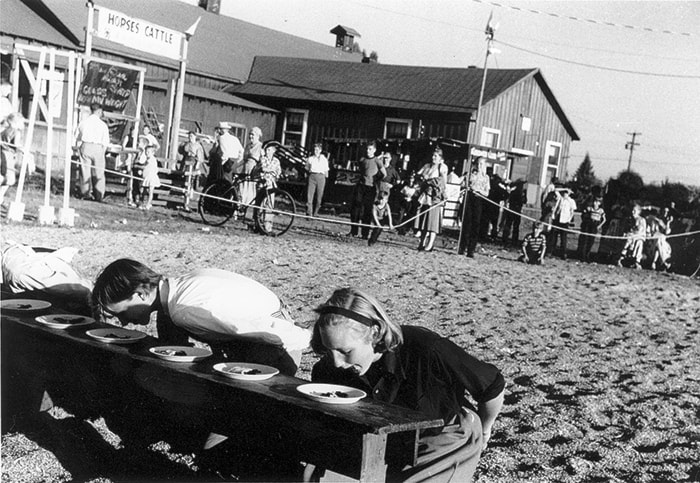Prior to the 1959 move of the agricultural association, to the Albion Fairgrounds, the heart of the community was the Aggie Hall and it’s grounds, which lay where Haney Place Mall is now.
The hall was built in 1909 on land that had been owned by Thomas Haney.
It allowed the annual fair to be moved from the municipal hall on Callaghan Street, where there was not sufficient outdoor space for livestock competitions, to the new hall where there was plenty of room for indoor displays and for livestock pens outdoors.
The annual fair was a much anticipated event.
Competition was fierce and for many people it could boost their ability to make a living if their stock or vegetables won prizes.
In those days, agriculture was not something that other people did – it touched every home in some way.
For women, the main areas of competition were canning, baking and fibre arts.
Canned goods were vital for winter and could be traded for other items.
Baking was a matter of pride as it was determined who made the most perfect pie crust or the most magnificent loaves of bread.
The fibre arts included sewing and knitting and quilting and were often an indication of thrifty re-use of items, which had already had a life or two.
Used clothing, flour sacks, and worn bedding were all incorporated in beautiful quilts that would be displayed for all to see.
The fair usually included a quilt in progress by the local Women’s Institute, which would work on the quilt at the fair, selling blank white spaces for a quarter. The buyer would then have their name neatly embroidered on the quilt, which would be raffled at the end of the fair.
We have several of these quilts in the museum collection and the names show residents and visitors contributed.
The Aggie grounds were also home to sports like baseball and lacrosse, though the ball players never liked sharing their field with cows, who made deep ankle-threatening holes when the field was muddy.
By the later 1950s, the ball players had moved to Pete Telosky’s stadium and the growing district had municipal government eyeing the Aggie grounds hungrily.
In 1959, the district purchased Spencer farm in Albion and traded it to the Maple Ridge Agricultural Association in exchange for the original grounds.
– By Val Patenaude of the Maple Ridge Museum.
